Country
Operator Image

Crash of a Boeing 707-321B in Cove Neck: 73 killed
Date & Time:
Jan 25, 1990 at 2134 LT
Registration:
HK-2016
Survivors:
Yes
Schedule:
Bogotá – Medellín – New York
MSN:
19276/592
YOM:
1967
Flight number:
AV052
Crew on board:
9
Crew fatalities:
Pax on board:
149
Pax fatalities:
Other fatalities:
Total fatalities:
73
Captain / Total hours on type:
1534.00
Copilot / Total hours on type:
64
Aircraft flight hours:
61764
Circumstances:
Avianca flight 052 (AV052), a Boeing 707-321B with Colombian registration HK-2016, crashed in a wooded residential area in Cove Neck, Long Island, NY. AV052 was a scheduled international passenger flight from Bogotá, Colombia, to New York-JFK Intl Airport, NY, with an intermediate stop at Jose Maria Cordova Airport, near Medellín, Columbia. Of the 158 persons aboard, 73 were fatally injured. Because of poor weather conditions in the northeastern part of the United States, the flightcrew was placed in holding 3 times by ATC for a total of about 1 hour and 17 minutes. During the 3rd period of holding, the flightcrew reported that the aircraft could not hold longer than 5 minutes, that it was running out of fuel, and that it could not reach its alternate airport, Boston-Logan Intl. Subsequently, the flightcrew executed a missed approach to JFK Intl Airport. While trying to return to the airport, the aircraft experienced a loss of power to all 4 engines and crashed approximately 21 miles northeast of JFK Airport.
Probable cause:
The failure of the flightcrew to adequately manage the airplane's fuel load, and their failure to communicate an emergency fuel situation to air traffic control before fuel exhaustion occurred. Contributing to the accident was the flightcrew's failure to use an airline operational control dispatch system to assist them during the international flight into a high-density airport in poor weather. Also contributing to the accident was inadequate traffic flow management by the faa and the lack of standardized understandable terminology for pilots and controllers for minimum and emergency fuel states. The safety board also determines that windshear, crew fatigue and stress were factors that led to the unsuccessful completion of the first approach and thus contributed to the accident.
Final Report:
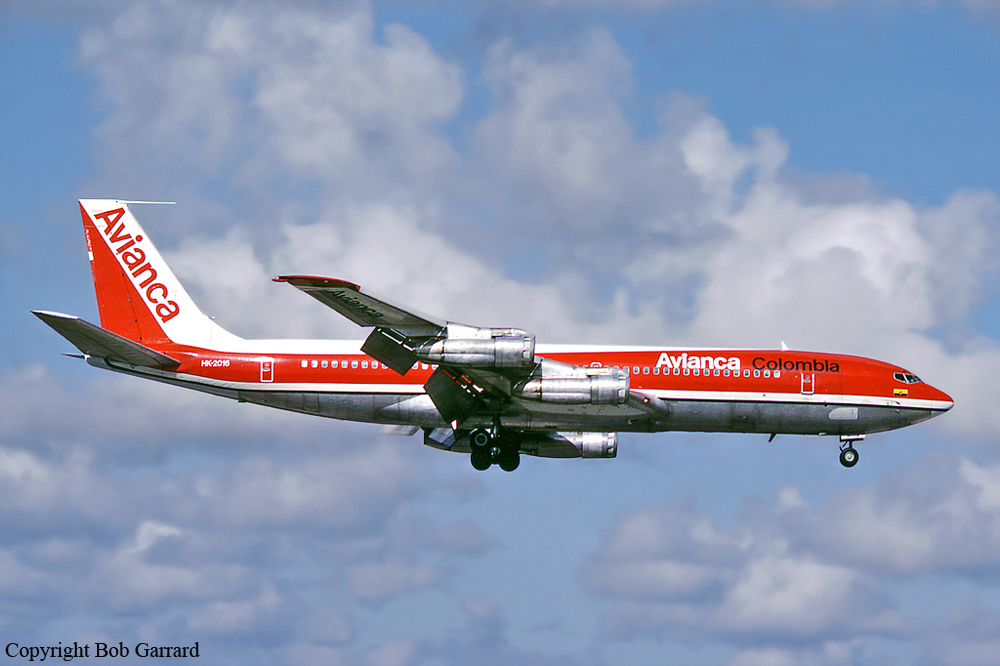
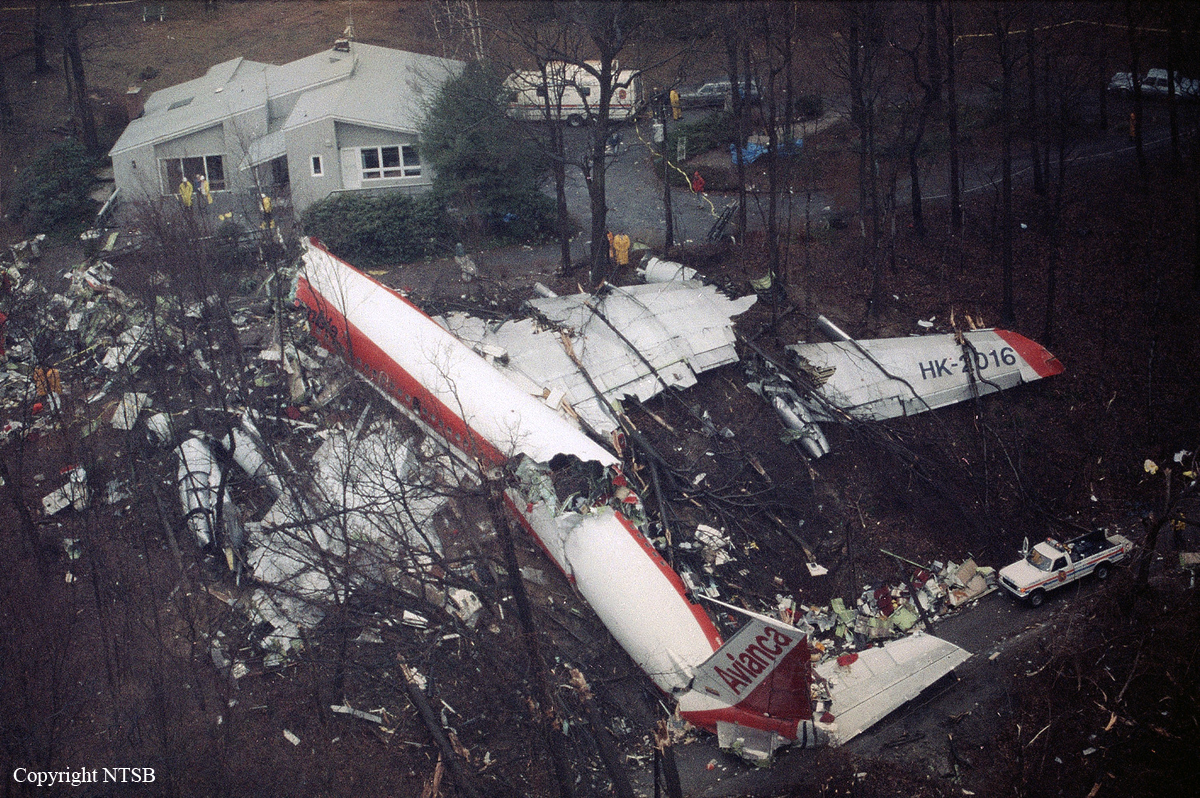
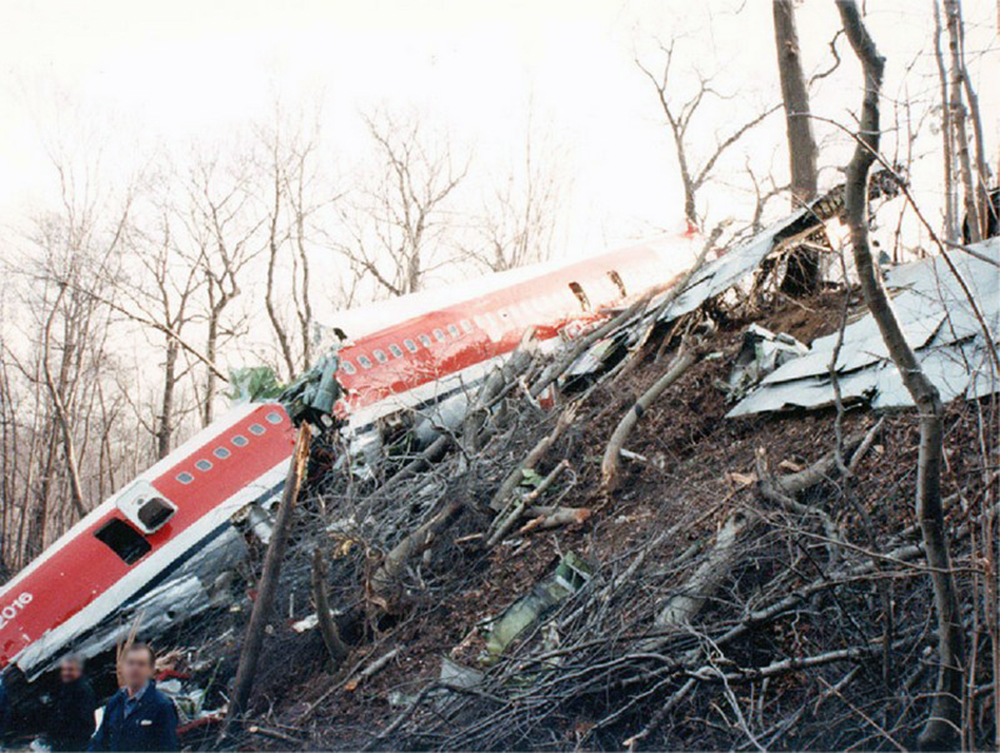
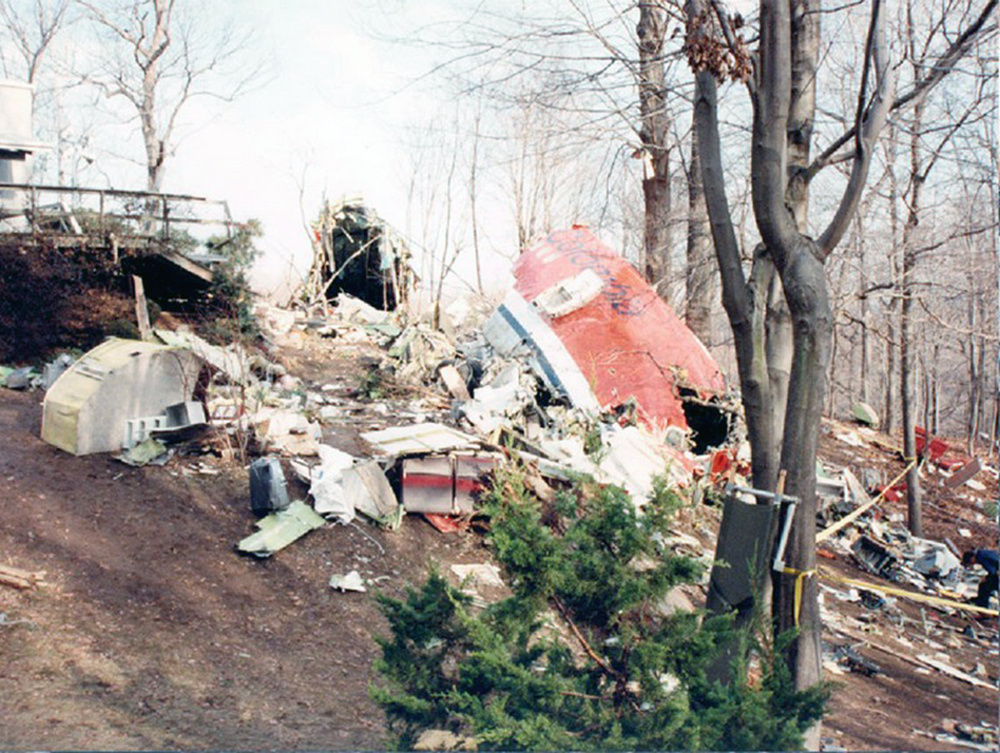
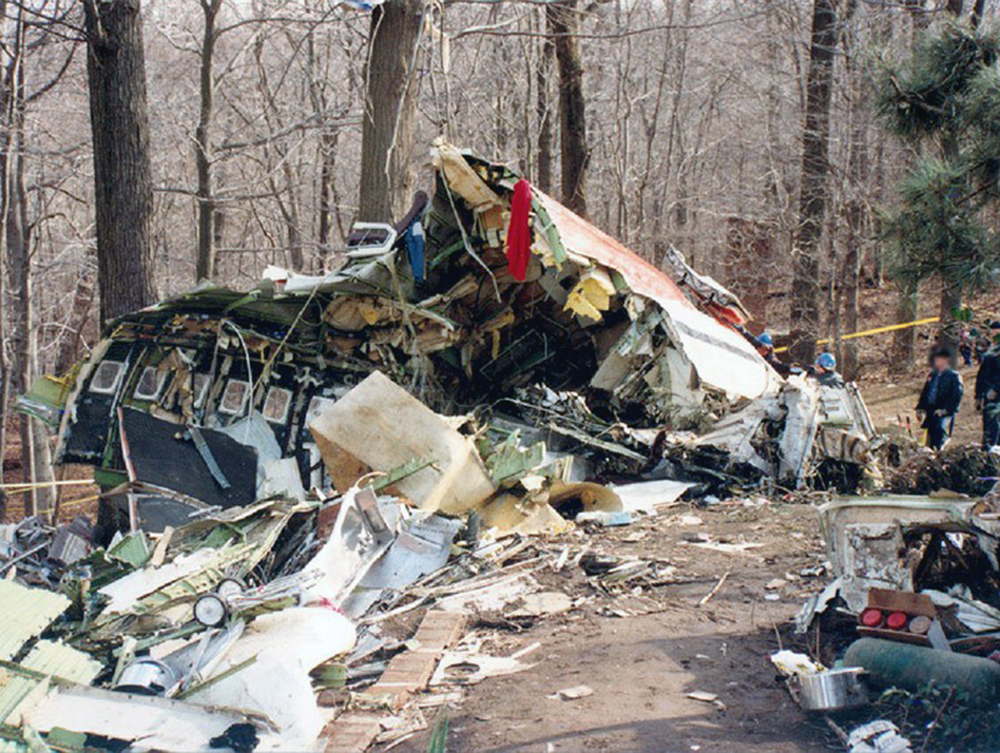
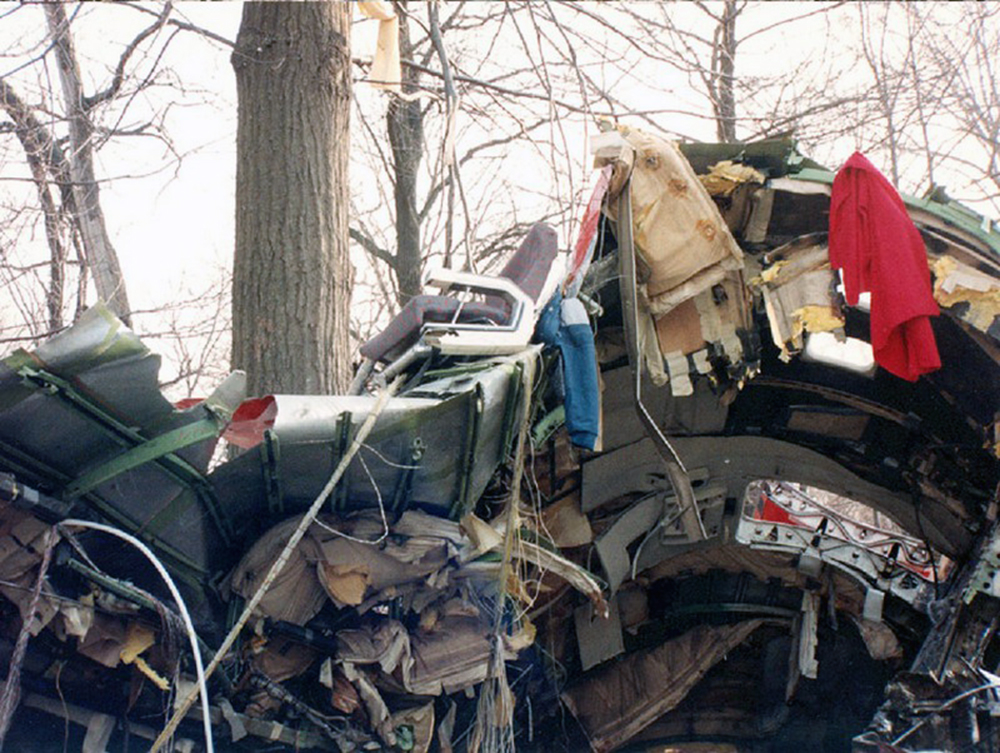
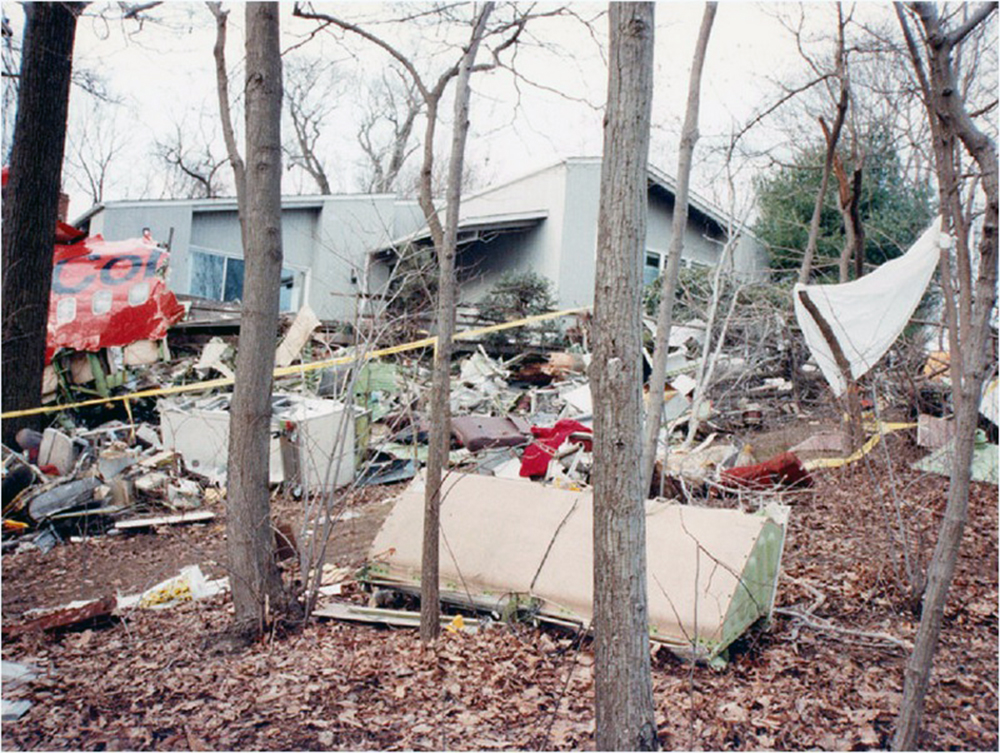


Crash of a Boeing 727-100 in Bogota: 110 killed
Date & Time:
Nov 27, 1989 at 0716 LT
Registration:
HK-1803
Survivors:
No
Schedule:
Bogotá - Cali
MSN:
19035
YOM:
1966
Flight number:
AV203
Crew on board:
6
Crew fatalities:
Pax on board:
101
Pax fatalities:
Other fatalities:
Total fatalities:
110
Circumstances:
After takeoff from Bogotá-El Dorado Airport, the crew was cleared to climb to FL130 when the aircraft suffered an explosion. It entered an uncontrolled descent and crashed in a huge explosion near Soacha, about 16 km south of Bogotá Airport. The aircraft disintegrated on impact and all 107 occupants were killed as well as three people on the ground.
Probable cause:
It was determined that a bomb was placed on board under the seat 14F by a Colombian narcotic cartel.
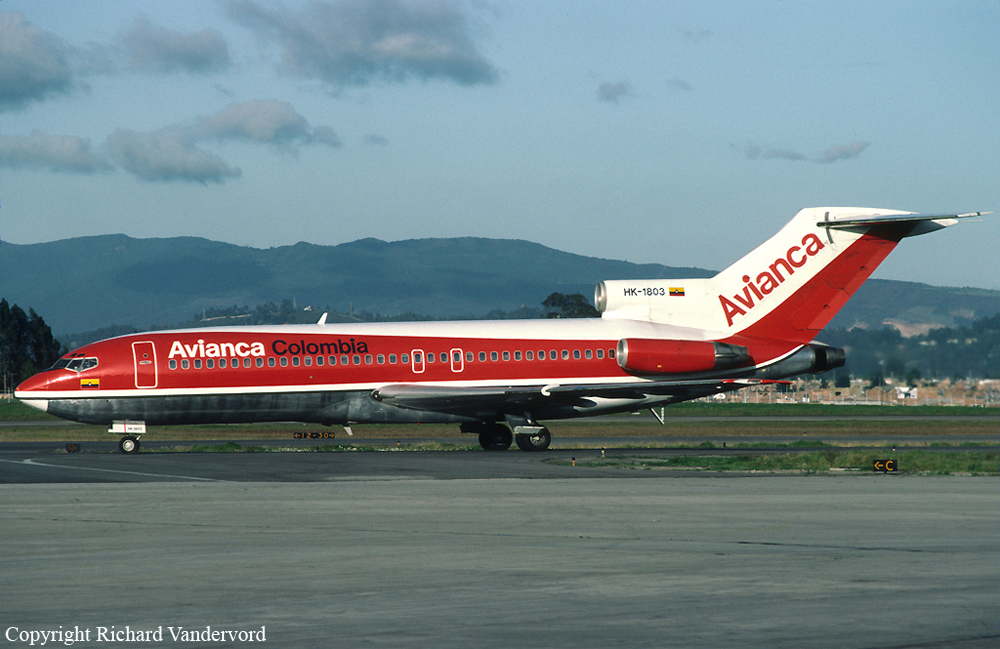


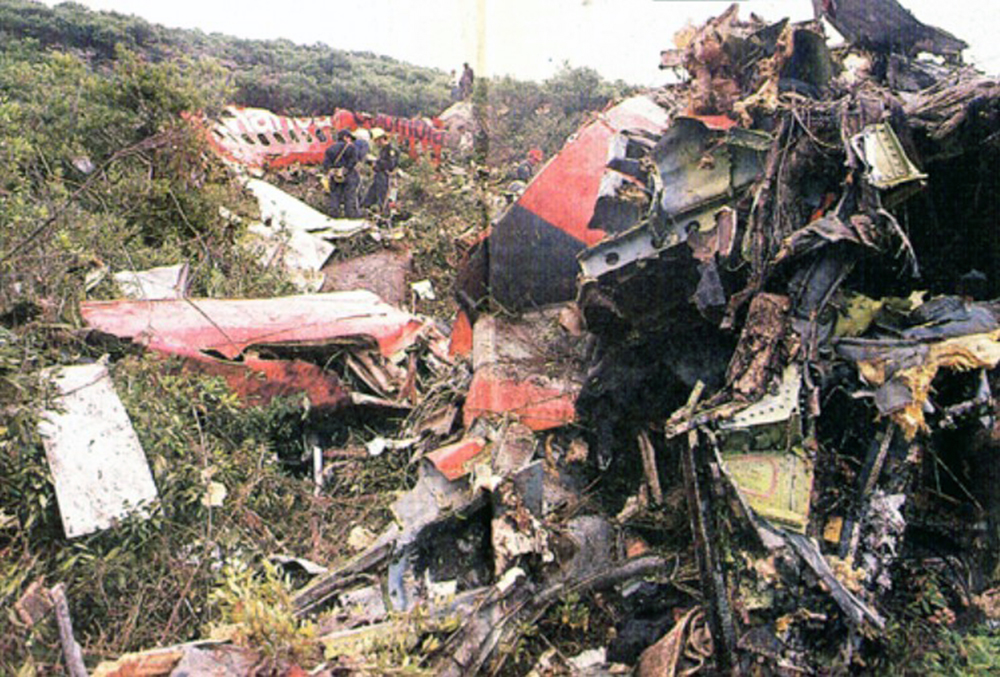
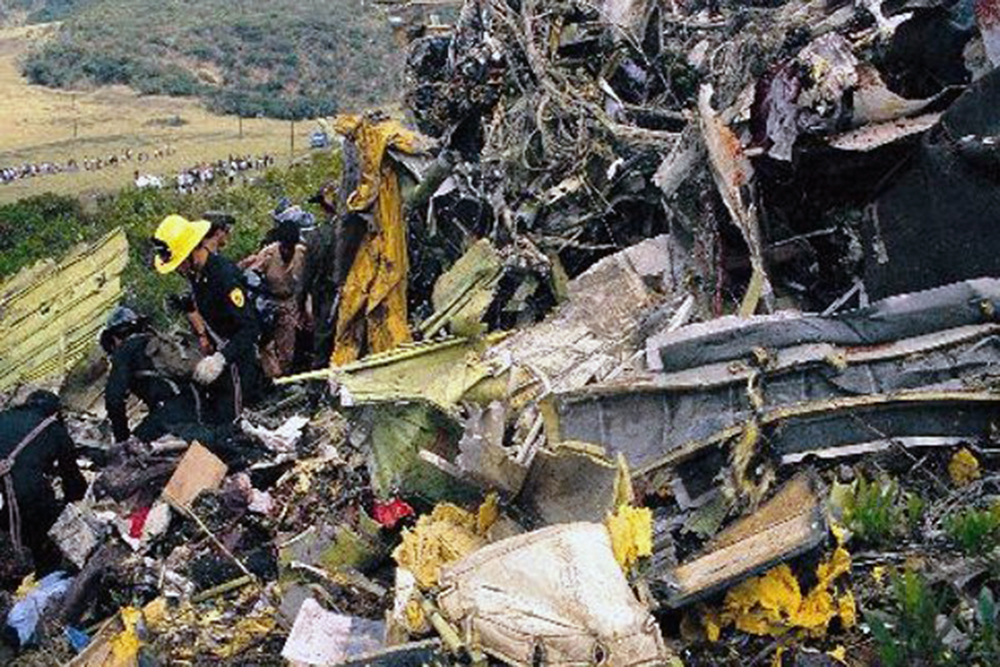
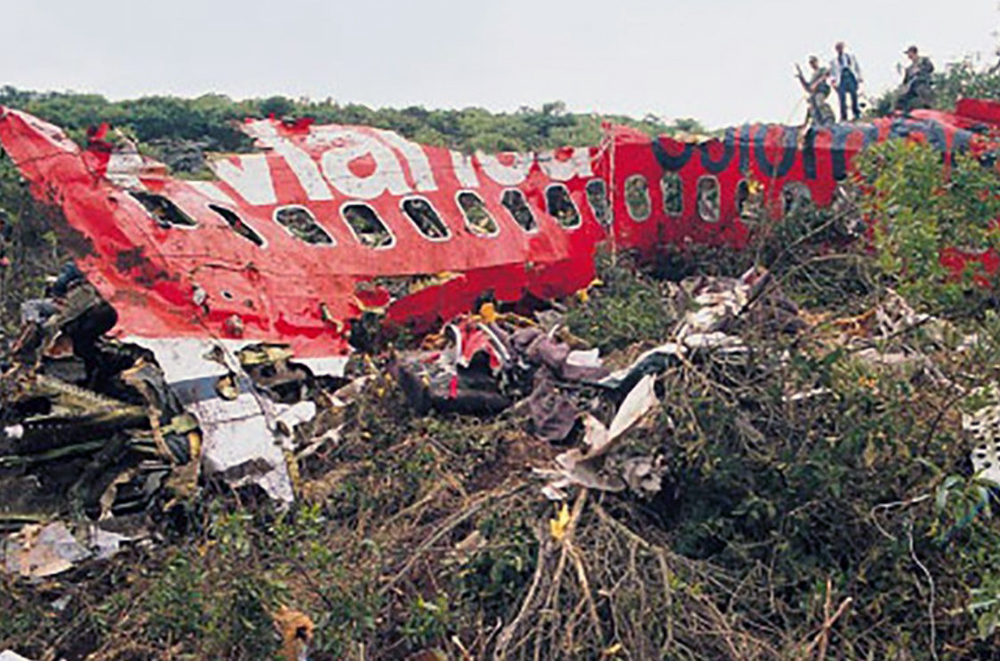

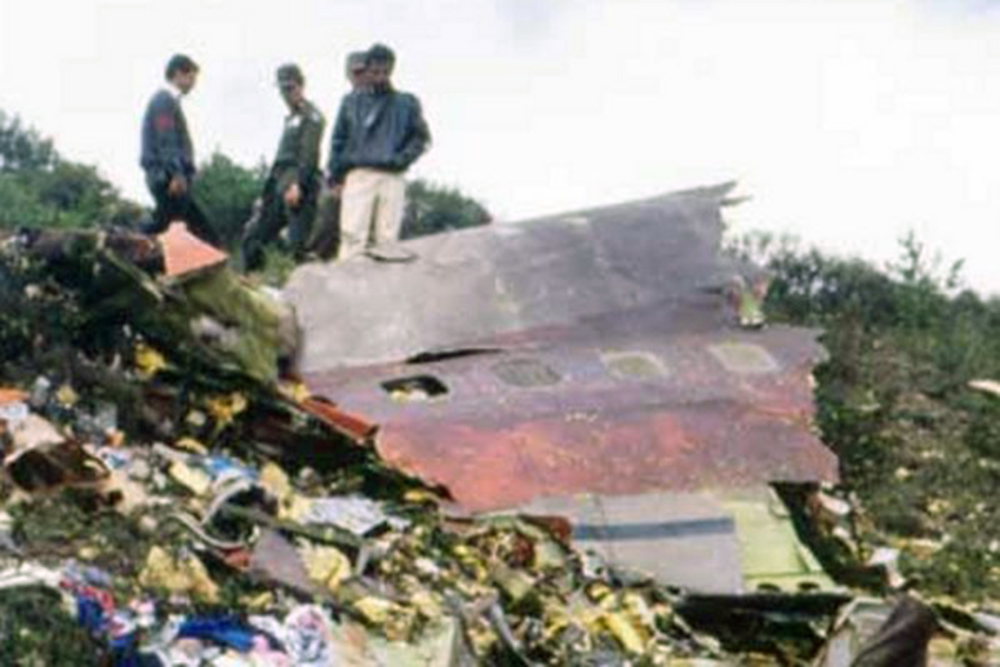


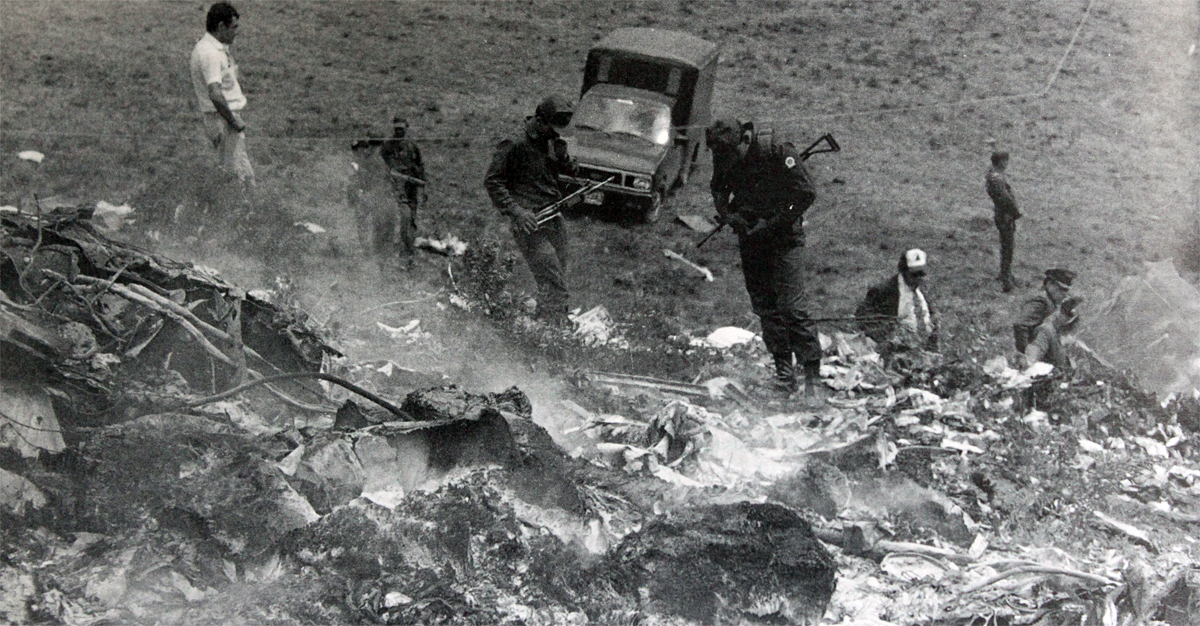

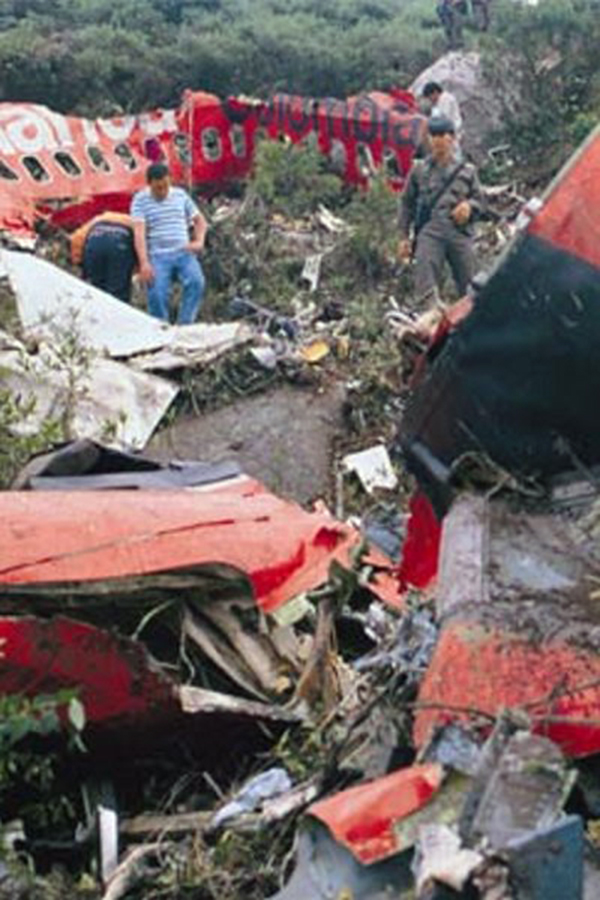
Crash of a Boeing 727-21 near Cúcuta: 143 killed
Date & Time:
Mar 17, 1988 at 1317 LT
Registration:
HK-1716
Survivors:
No
Schedule:
Bucaramanga – Cúcuta – Cartagena – Barranquilla
MSN:
18999
YOM:
1966
Flight number:
AV410
Crew on board:
7
Crew fatalities:
Pax on board:
136
Pax fatalities:
Other fatalities:
Total fatalities:
143
Captain / Total hours on type:
4050.00
Copilot / Total hours on type:
340
Aircraft flight hours:
43848
Circumstances:
Avianca flight 410 was destroyed when it impacted El Espartillo Mountain after takeoff from Cúcuta Airport in Colombia. All 143 occupants sustained fatal injuries. The aircraft, a Boeing 727-21 operated flight AV410 from Bucaramanga to Barranquilla, with en route stops at Cúcuta and Cartagena. Because the originally planned aircraft was not available, HK-1716 was prepared for the flight. This resulted in a departure delay of 2 hours and 30 minutes. The flight landed at Cúcuta at 12:28 local time. At 13:06, the pilot requested clearance to start, but he was told there was a 10-minute delay because of three incoming aircraft. The crew immediately requested clearance for a climb on course ("Why not clear us to climb on course to avoid delaying this flight further? We're: pretty far behind") and the tower granted their request at 13:08: "OK, cleared for engine start, climb on course VMC, report ready to taxi, temperature 28°". This, added to the anomalous presence in the cockpit of another pilot whose loquaciousness continually disrupted the work of all the crew members, affected the way in which the pilot supervised the actions of his co-pilot, who was Pilot Flying. There was no crew briefing, nor did the pilot-in command give any instructions for the VMC departure. Two minutes later the tower controller instructed them to taxi to runway 33. At 13:12 the tower reported, "Cleared to Cartagena via Uniform Whisky 19, Whisky 7, Whisky 10, climb and maintain two six zero after takeoff, climb on course VMC, QNH ....correction transponder Alpha 2216". Take-off clearance was issued at 13:13. The initial climb path followed the extended runway centre line to the inner marker, at which point the aircraft entered a continuous left turn. At 13:17 the pilot said to the copilot, "In any case, start turning right." Subsequently the aircraft struck the peak of El Espartillo at an elevation of 6,343 feet.
Probable cause:
The accident was the consequence of the following active and passive factors:
1. Active:
A. Personnel factors - Pilot-in-command - Procedures, Regulations and instructions
a) Diverted attention from operation of aircraft and failed to exercise adequate and constant supervision over the performance of his co-pilot;
b) Tolerated inappropriate interference with cockpit discipline by authorized persons with access to the flight deck;
c) Continued VFR flight into IMC.
B. Personnel factor - Non-crew pilot in cockpit - Procedures, regulations and instructions
Interfered constantly with the normal operation of the aircraft, distracting the crew from the efficient execution of their duties.
2. Passive
A. Personnel factor- Crew- Procedures, regulations and instructions: lack of teamwork on the part of the crew, reflected in the failure to coordinate the instructions needed to take off and climb out in VMC using a profile established in accordance with the specific conditions.
B. Other factors - Meeting the schedule: The delays resulting from the change of aircraft for mechanical reasons contributed to the decision by the pilot-in-command to give inappropriate support to company priorities and request to depart, rather than waiting as recommended by the Control Tower, in order to avoid adding to the delays already experienced."
1. Active:
A. Personnel factors - Pilot-in-command - Procedures, Regulations and instructions
a) Diverted attention from operation of aircraft and failed to exercise adequate and constant supervision over the performance of his co-pilot;
b) Tolerated inappropriate interference with cockpit discipline by authorized persons with access to the flight deck;
c) Continued VFR flight into IMC.
B. Personnel factor - Non-crew pilot in cockpit - Procedures, regulations and instructions
Interfered constantly with the normal operation of the aircraft, distracting the crew from the efficient execution of their duties.
2. Passive
A. Personnel factor- Crew- Procedures, regulations and instructions: lack of teamwork on the part of the crew, reflected in the failure to coordinate the instructions needed to take off and climb out in VMC using a profile established in accordance with the specific conditions.
B. Other factors - Meeting the schedule: The delays resulting from the change of aircraft for mechanical reasons contributed to the decision by the pilot-in-command to give inappropriate support to company priorities and request to depart, rather than waiting as recommended by the Control Tower, in order to avoid adding to the delays already experienced."
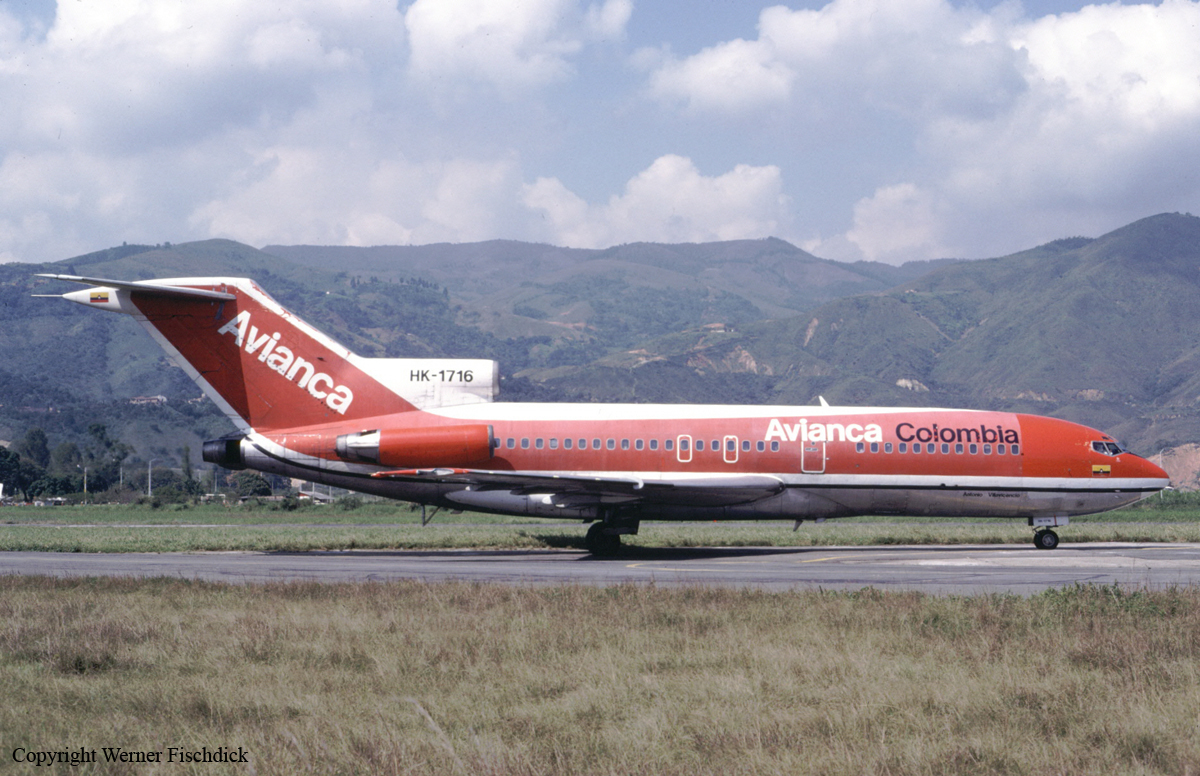
Crash of a Boeing 747-283B in Madrid: 181 killed
Date & Time:
Nov 27, 1983 at 0106 LT
Registration:
HK-2910
Survivors:
Yes
Schedule:
Frankfurt – Paris – Madrid – Caracas – Bogotá
MSN:
21381
YOM:
1977
Flight number:
AV011
Crew on board:
19
Crew fatalities:
Pax on board:
173
Pax fatalities:
Other fatalities:
Total fatalities:
181
Captain / Total hours on type:
2432.00
Copilot / Total hours on type:
875
Aircraft flight hours:
20811
Aircraft flight cycles:
5800
Circumstances:
Following an uneventful flight from Paris-Roissy-CDG Airport, the crew was cleared to descent to Madrid-Barajas Airport runway 33. Once the altitude of 9,000 feet reached on descent, the crew was cleared to continue. At 0103LT, he was cleared to land on runway 33 and should complete a turn to the right. Following several errors on approach, the crew initiated a right turn prior to pass over the VOR, causing the aircraft to descent below the MDA. At an altitude of 2,247 feet and at a speed of 142 knots, the right main gear struck the top of a hill. Upon impact, the right main gear and the engine n°4 were torn off. Three seconds later, while in a 4,9° nose-up attitude, at a speed of 135 knots, the aircraft struck the top of a second hill. Then, six seconds later, the right wing struck the ground. The aircraft overturned and crashed upside down, bursting into flames. The wreckage was found 12 km from the runway threshold in an olive plantation. Eleven passengers (among them four members of the same family, father, mother and both children) were injured while 181 other occupants were killed, among them the Peruvian writer Manuel Scorza.
Probable cause:
Following a series of omissions and navigation errors on descent, the crew adopted a wrong approach configuration, causing the aircraft to descend below the MDA without proper visual contact with the runway until initial and final impact with the ground. The following contributing factors were reported:
_ Inaccurate navigation by the crew, which placed them in an incorrect position for initiating the approach manoeuvre,
- Failure of the crew to take corrective action after the GPWS alarm sounded in the cockpit,
- Poor crew coordination,
- Crew fatigue,
- Lack of ATC assistance during the last portion of the flight,
- Misinterpretation of ATC instructions on part of the flying crew,
- Lack of visibility due to the night.
_ Inaccurate navigation by the crew, which placed them in an incorrect position for initiating the approach manoeuvre,
- Failure of the crew to take corrective action after the GPWS alarm sounded in the cockpit,
- Poor crew coordination,
- Crew fatigue,
- Lack of ATC assistance during the last portion of the flight,
- Misinterpretation of ATC instructions on part of the flying crew,
- Lack of visibility due to the night.
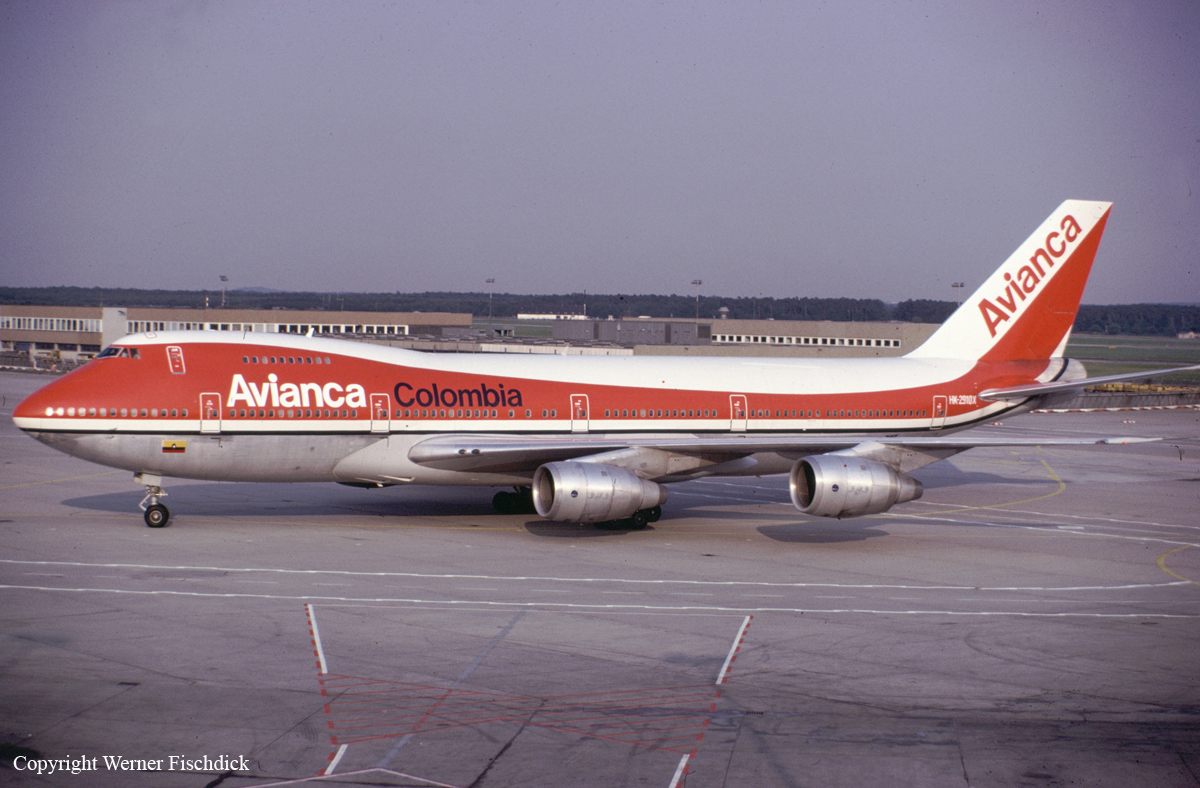

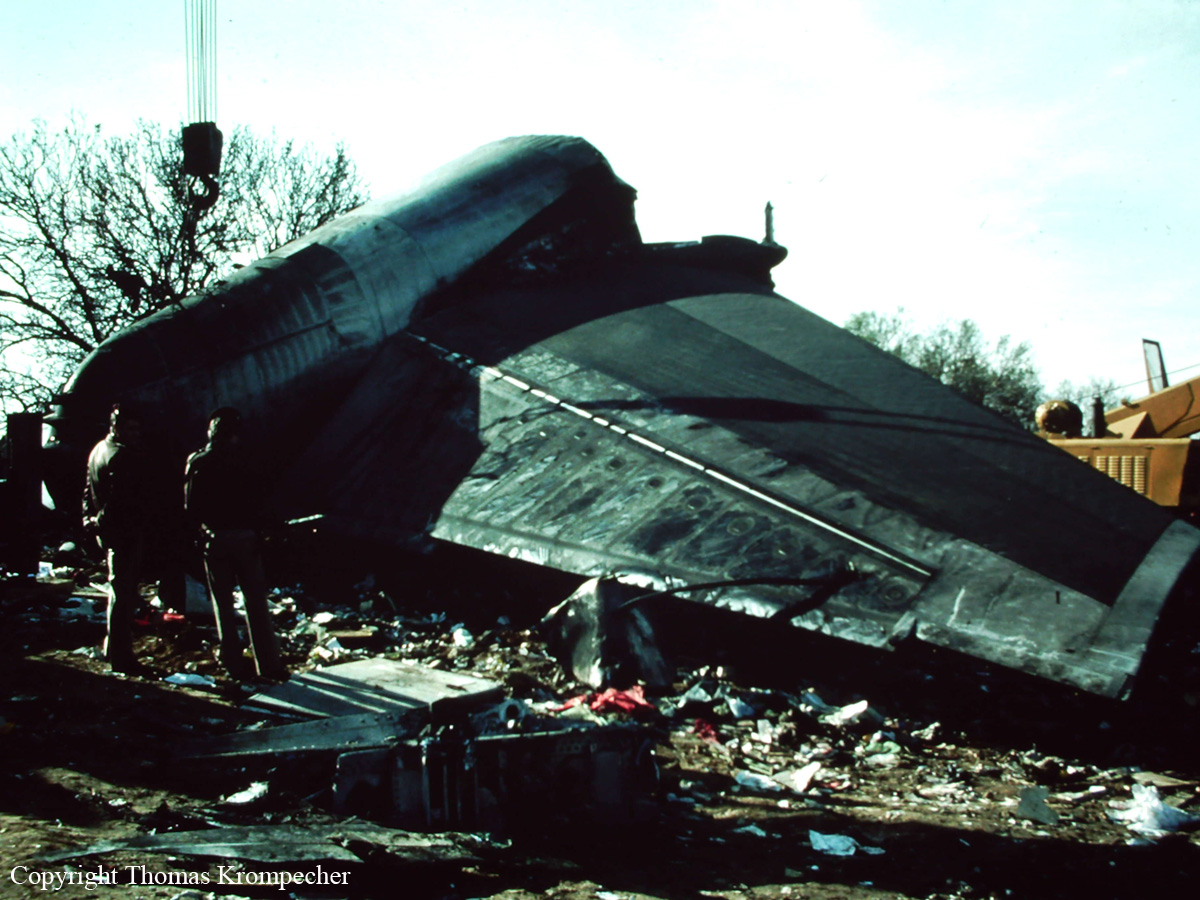
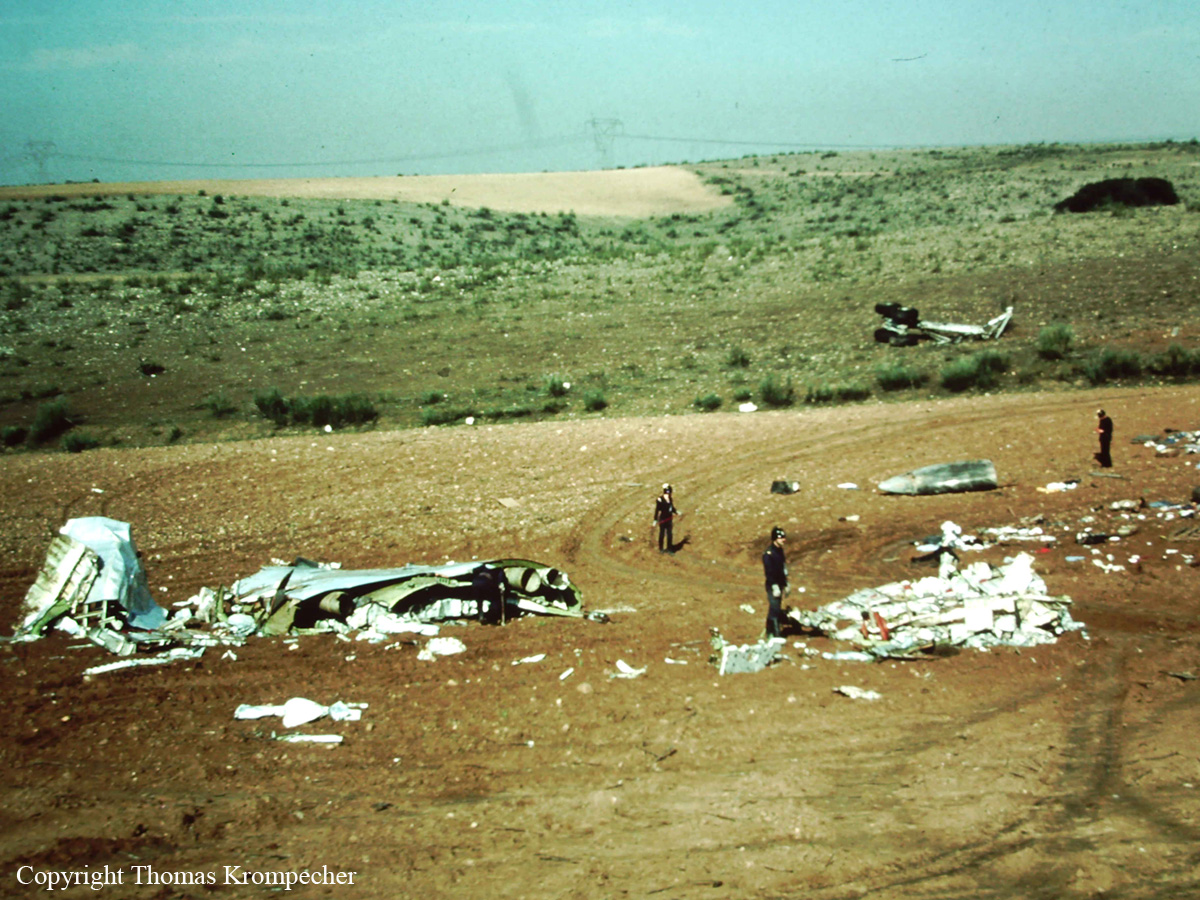
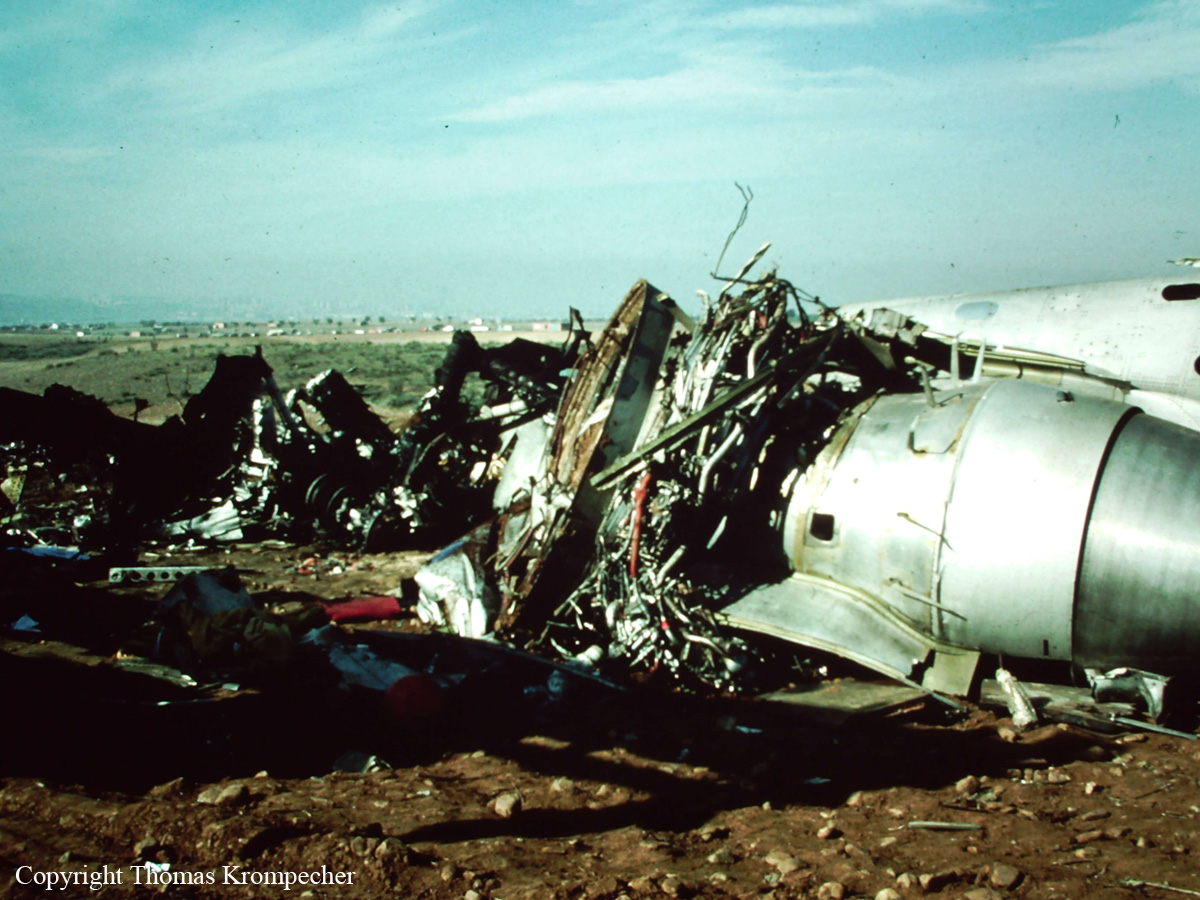
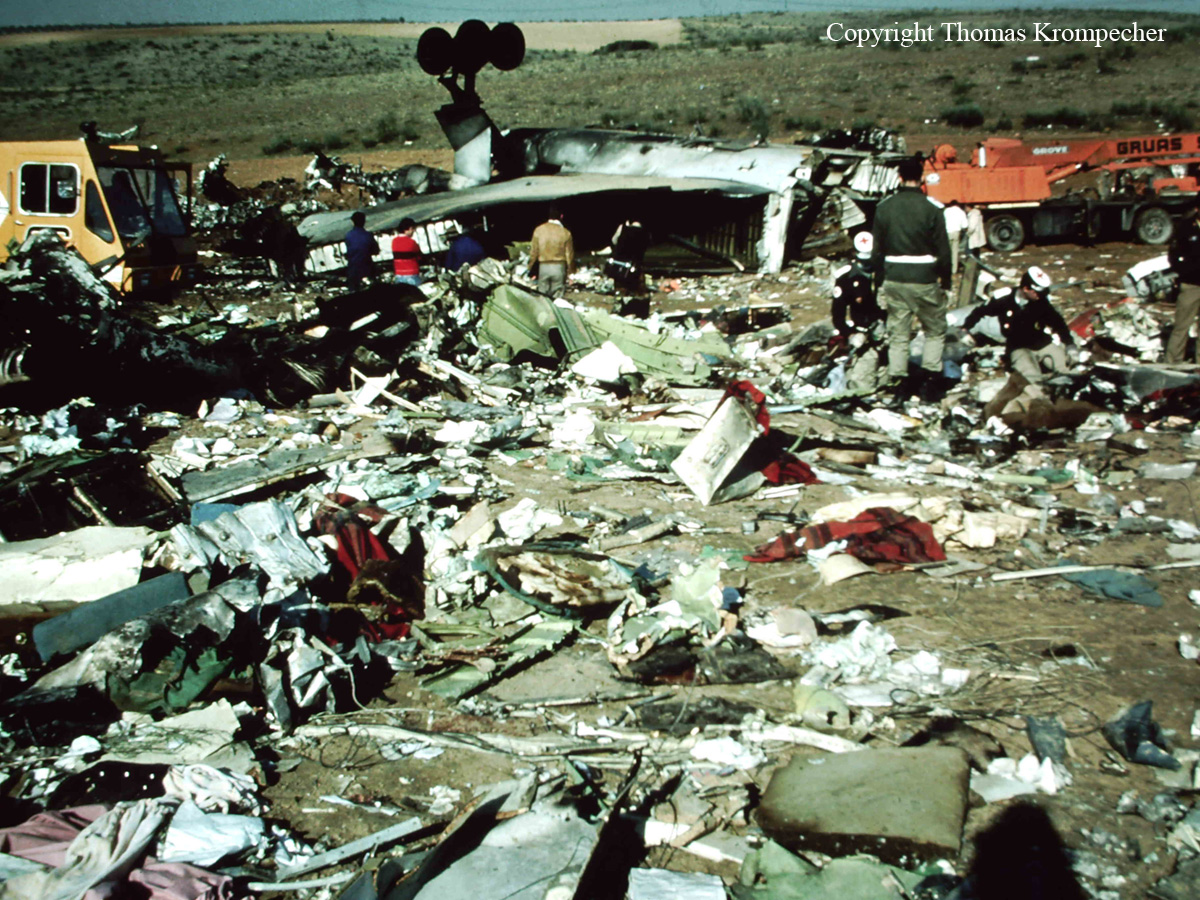
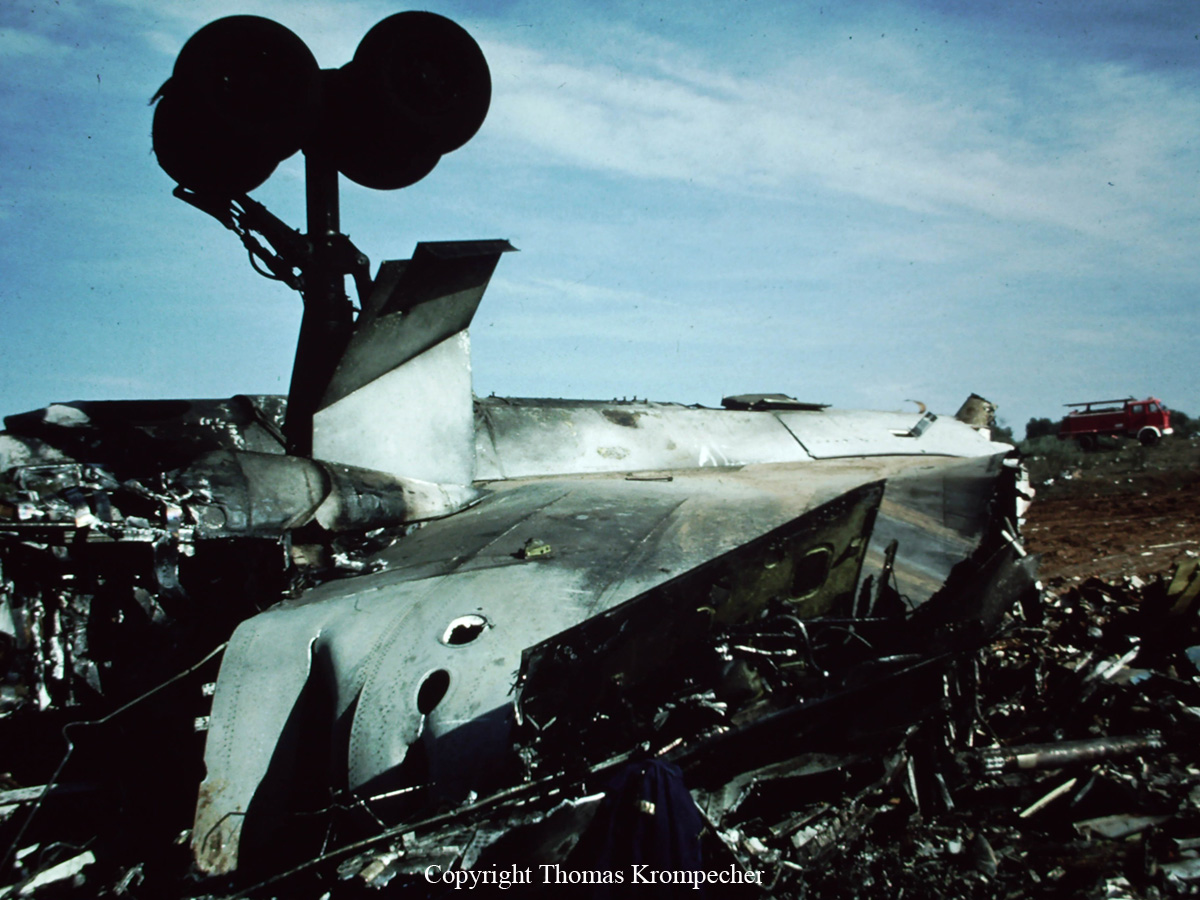
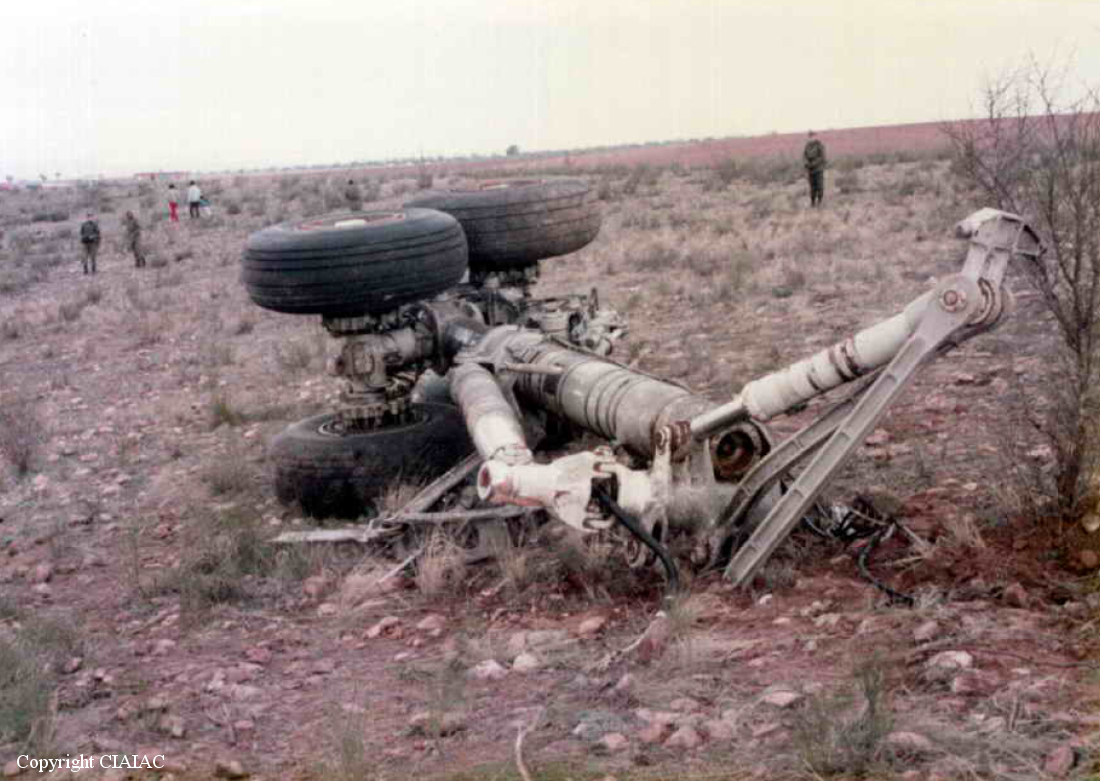
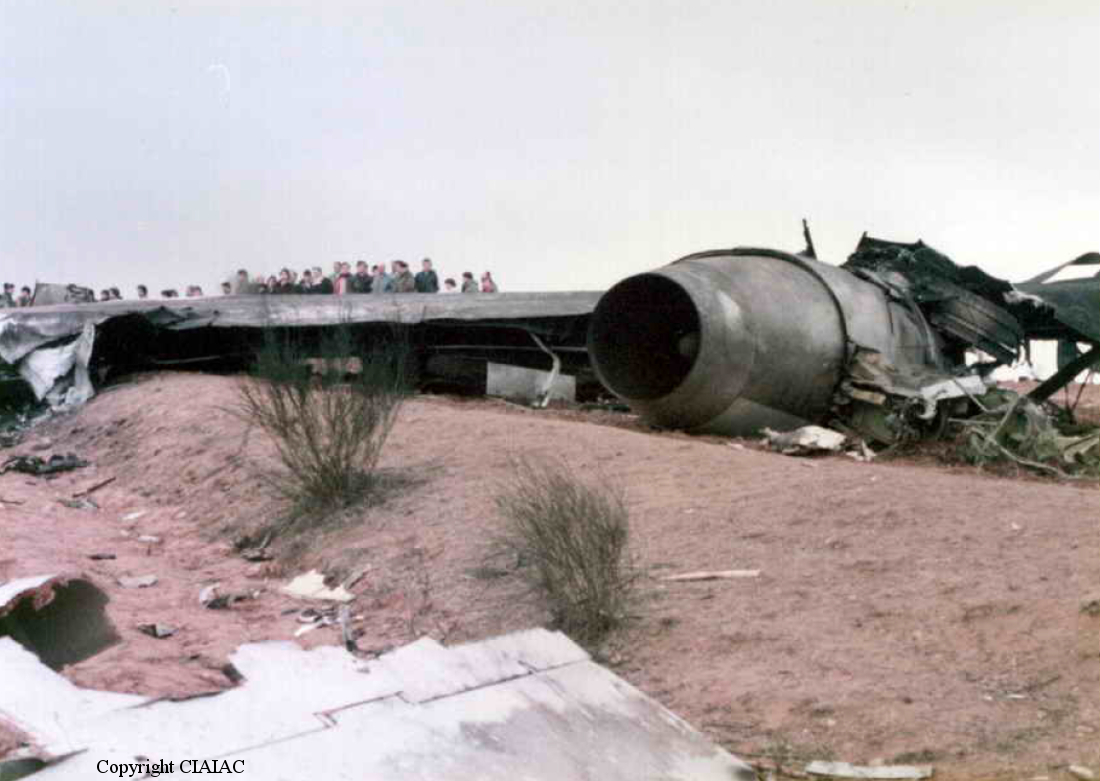


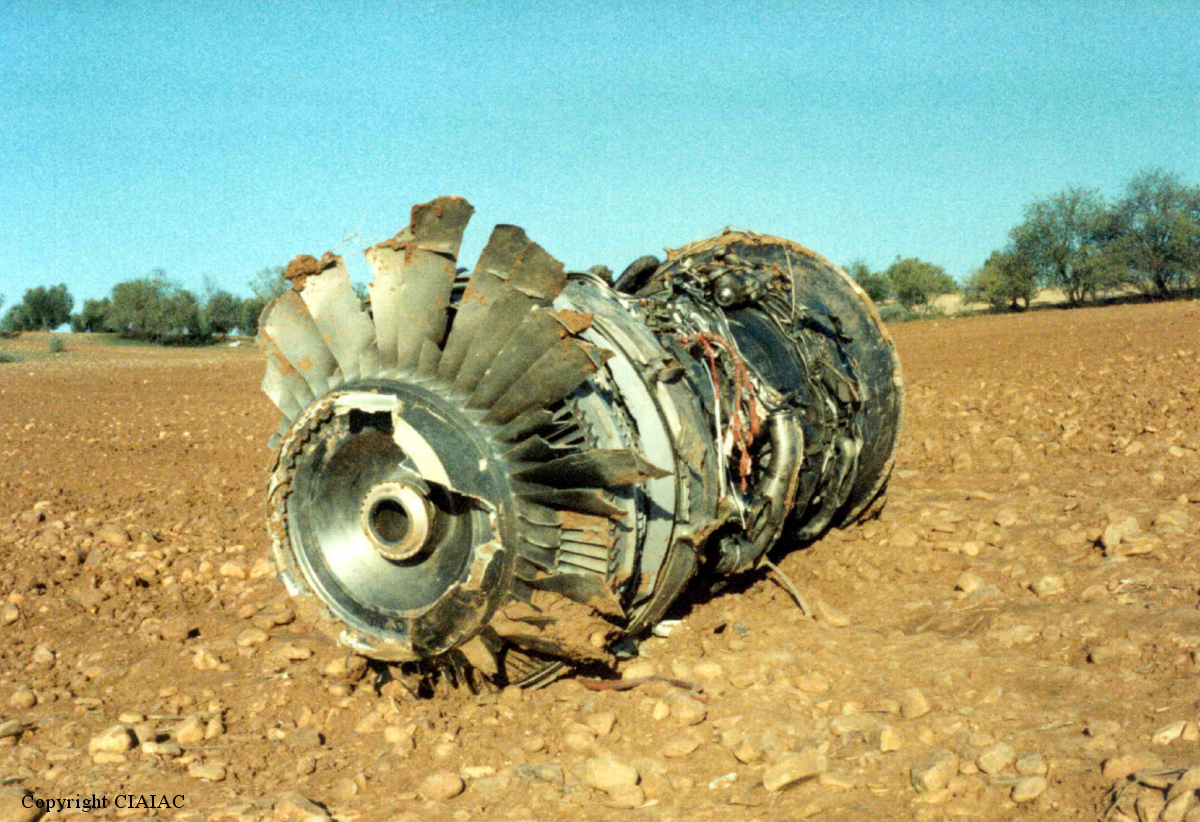
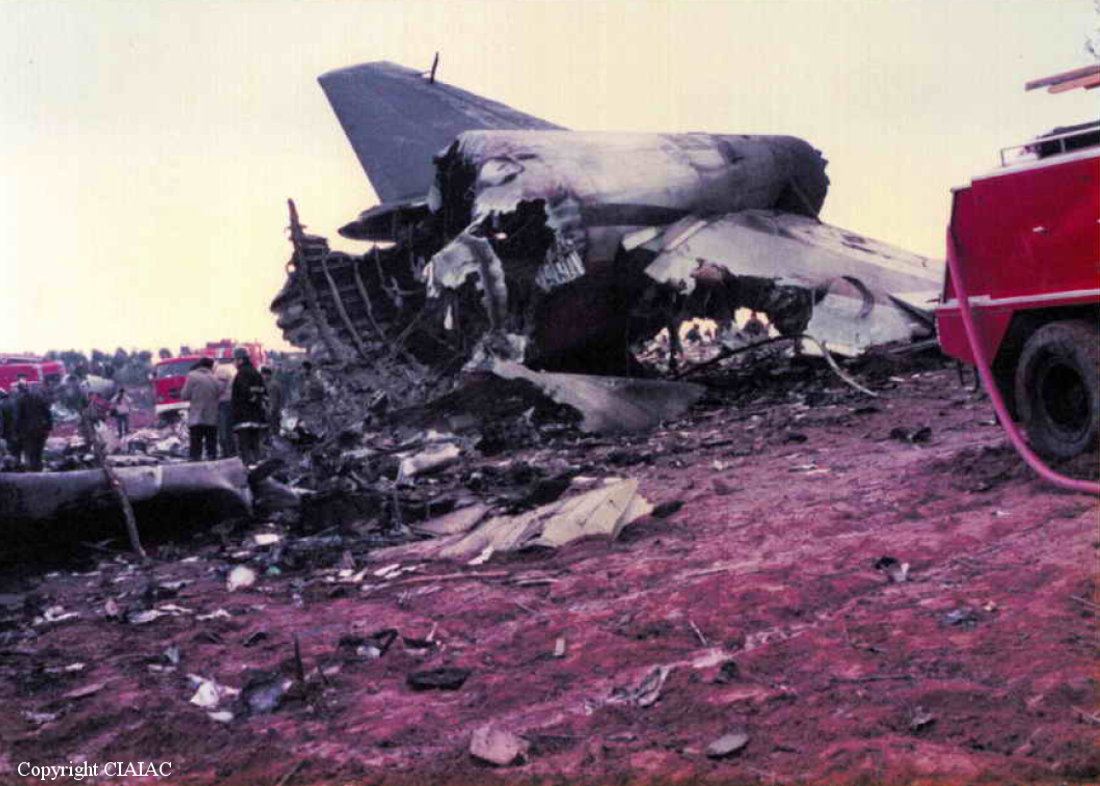


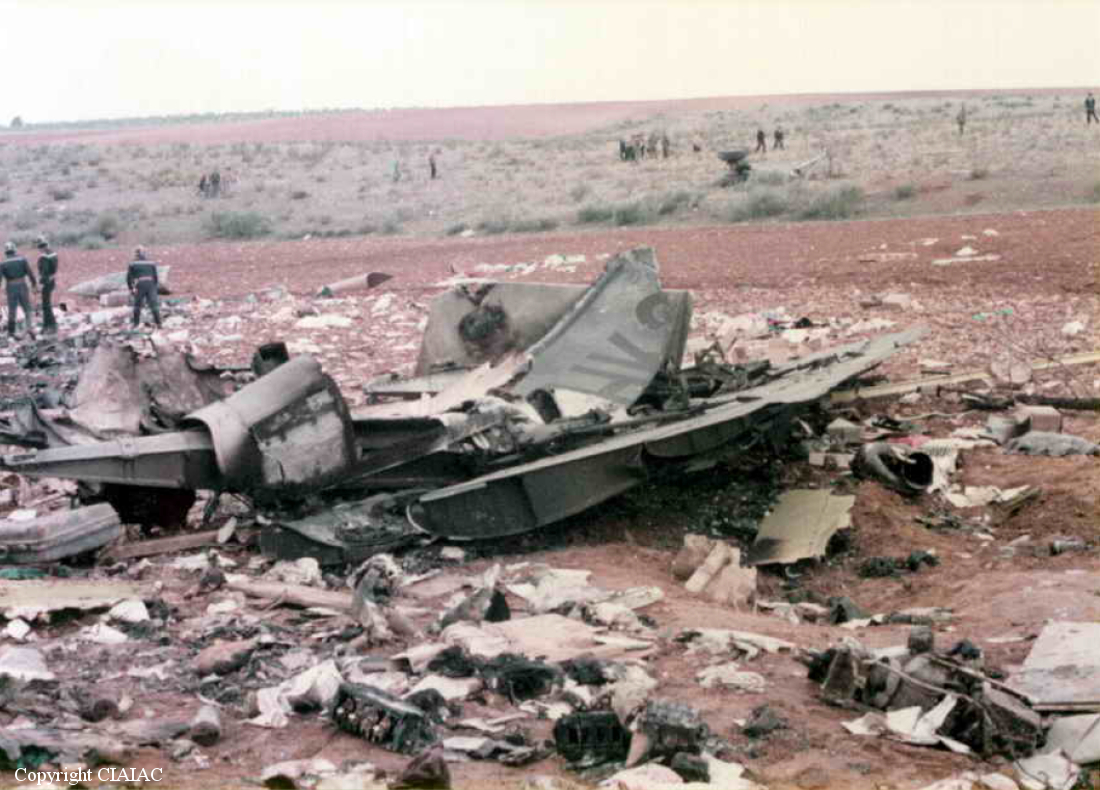

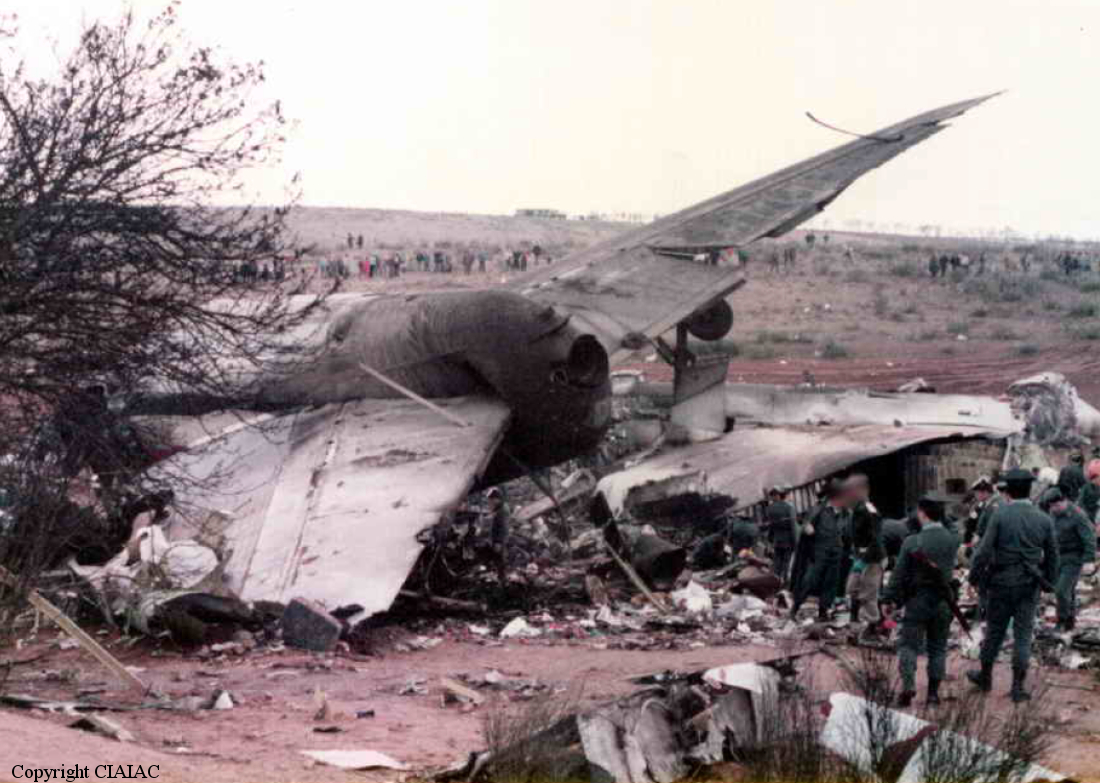
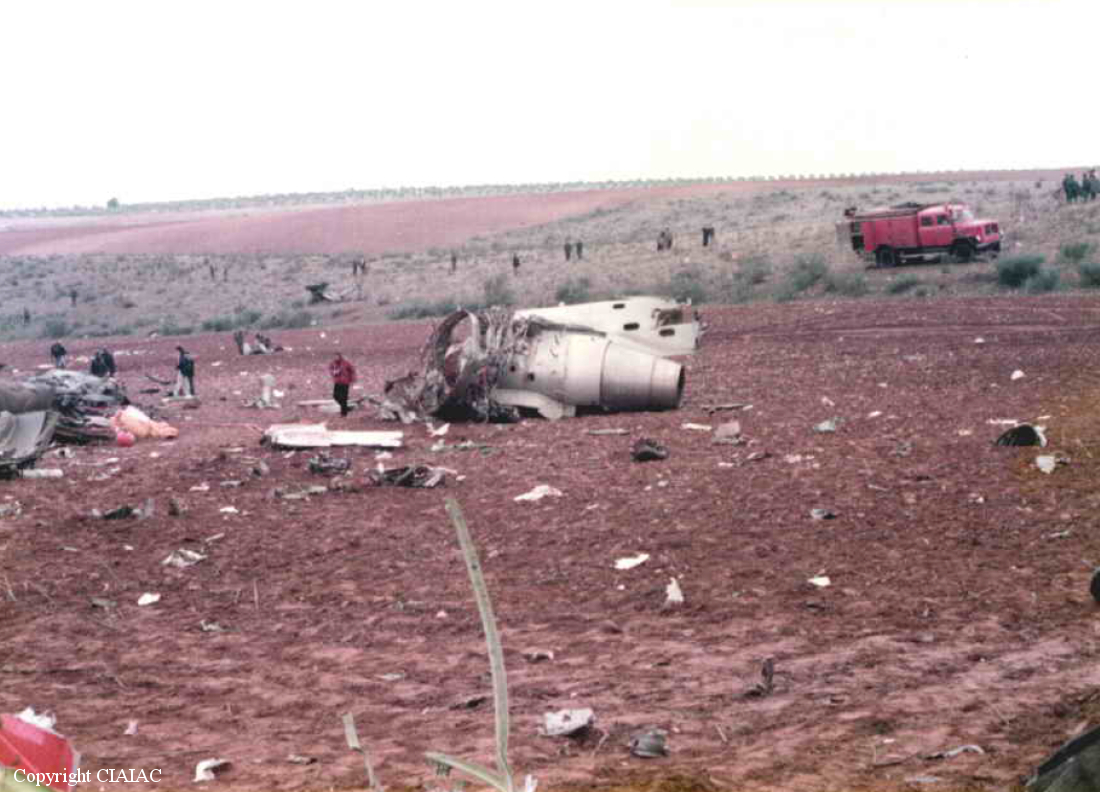
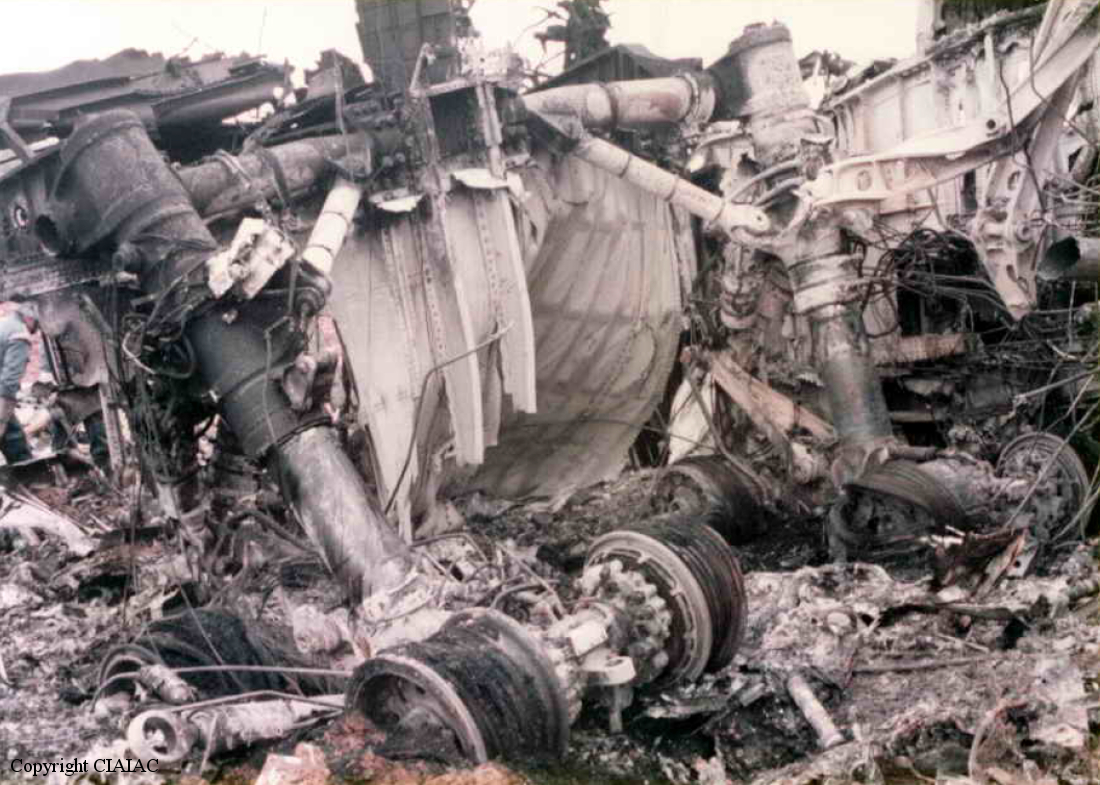
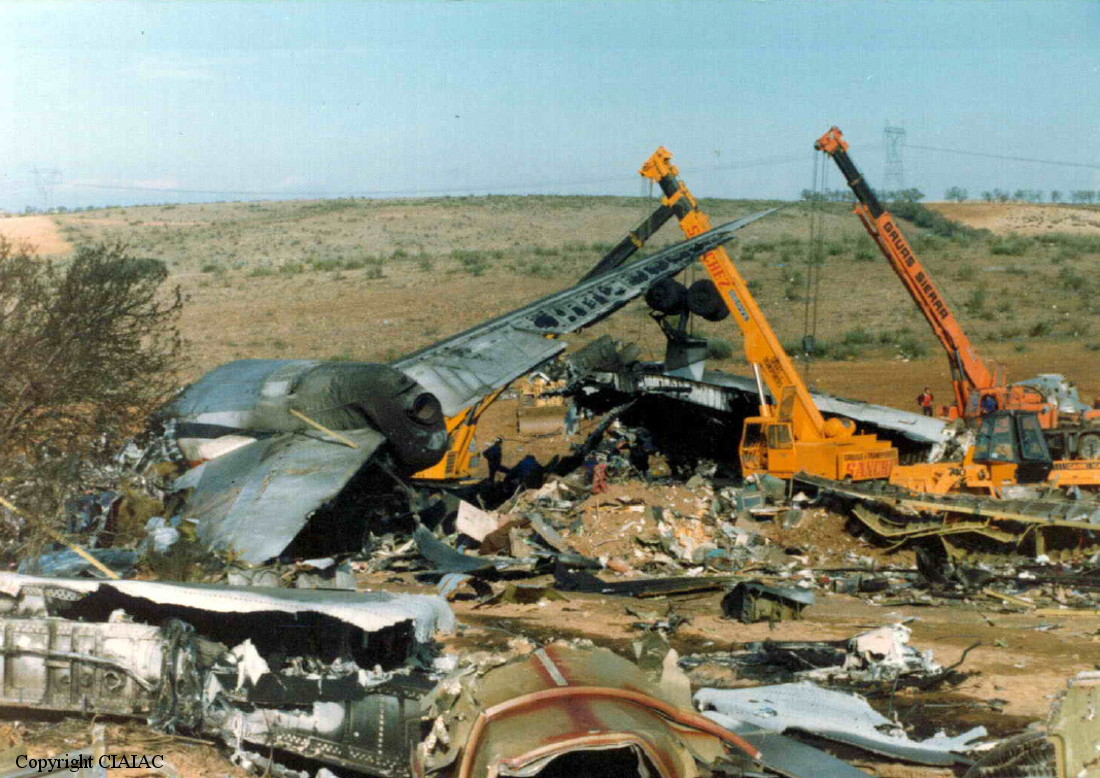
Crash of a Boeing 720-059B in Quito
Date & Time:
Jan 27, 1980
Registration:
HK-725
Survivors:
Yes
MSN:
18087/249
YOM:
1961
Crew on board:
0
Crew fatalities:
Pax on board:
0
Pax fatalities:
Other fatalities:
Total fatalities:
0
Circumstances:
After landing at Quito-Mariscal Sucre Airport, the airplane was unable to stop within the remaining distance. It overran, lost its nose gear and came to a halt about 70 meters past the runway end. There were no casualties but the aircraft was damaged beyond repair.
Probable cause:
Wrong approach configuration on part of the crew who landed at an excessive speed of 143 knots instead of the requested 123 knots according to actual flight conditions. The touchdown point was 300 meters past the runway threshold and the crew failed to activate the emergency brakes.

Crash of a Boeing 720-047B in Mexico City
Date & Time:
Aug 16, 1976
Registration:
HK-723
Survivors:
Yes
Schedule:
Bogotá - Mexico City
MSN:
18061/197
YOM:
1961
Crew on board:
6
Crew fatalities:
Pax on board:
121
Pax fatalities:
Other fatalities:
Total fatalities:
0
Circumstances:
During the last segment on final approach to Mexico City-Benito Juarez Airport, while passing over the runway threshold, the four engine airplane entered an area of heavy rain falls. The pilot-in-command apparently lost visual contact with the runway and decided to initiate a go-around manoeuvre when the airplane stalled, nosed down and struck the runway surface nose gear first. Upon impact, the nose gear was torn off and the airplane slid for several metres before coming to rest. All 127 occupants were evacuated safely.
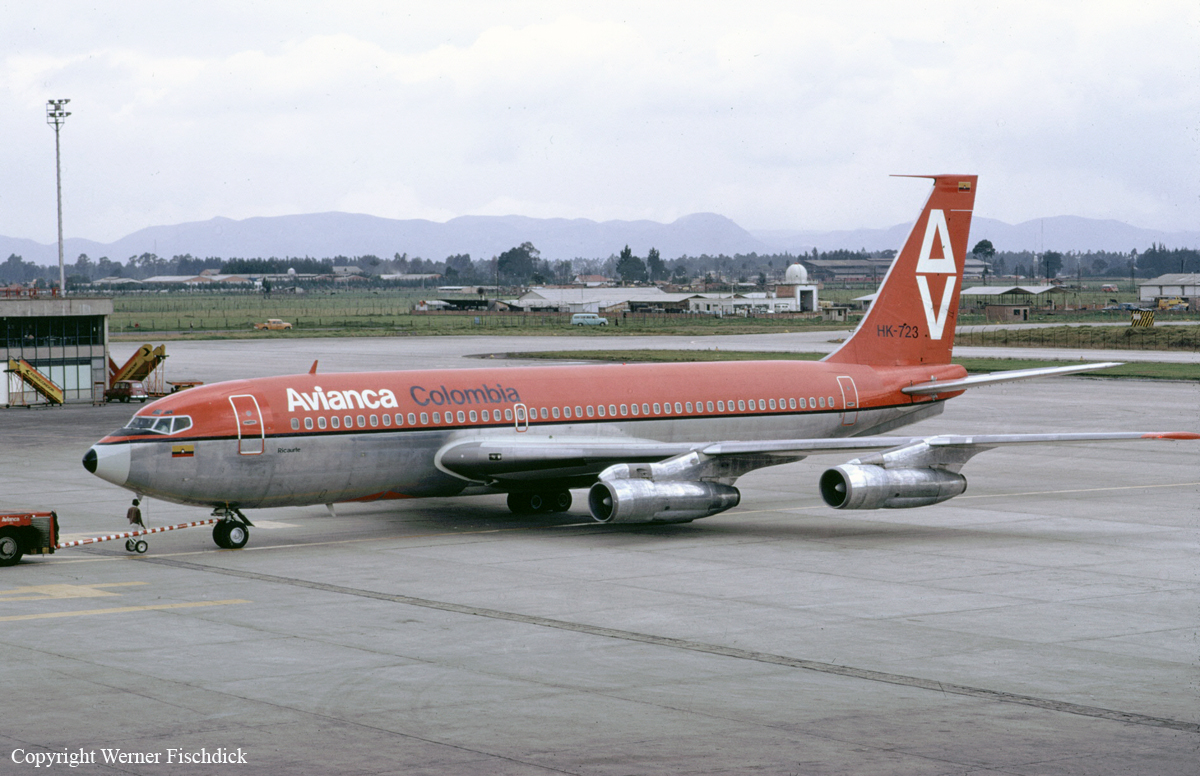
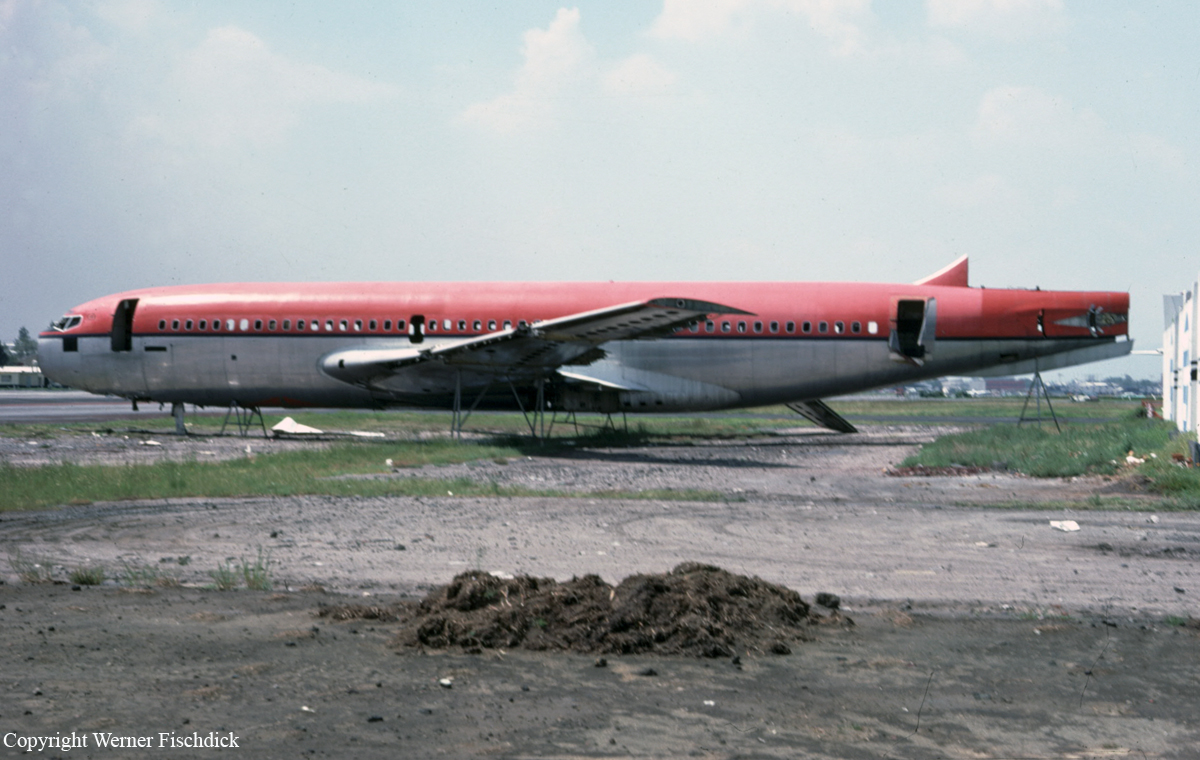
Crash of a Boeing 727-24C in Barranquilla: 4 killed
Date & Time:
Sep 30, 1975
Registration:
HK-1272
Survivors:
No
Schedule:
Bogotá - Barranquilla - Miami
MSN:
19525
YOM:
1967
Crew on board:
4
Crew fatalities:
Pax on board:
0
Pax fatalities:
Other fatalities:
Total fatalities:
4
Circumstances:
On approach to Barranquilla-Soledad Airport, the crew encountered poor visibility due to foggy conditions. Unable to locate the runway in below weather minima, the captain decided to make a go-around. Few minutes later, while on a second attempt to land, the crew failed to realize his altitude was too low when the airplane struck tree tops 1,000 meters short of runway 04 threshold. The aircraft lost height and crashed in flames 300 meters short of runway. The aircraft was totally destroyed and all four occupants have been killed.
Probable cause:
The crew continued the approach below MDA after passing the decision height in below weather minimums.

